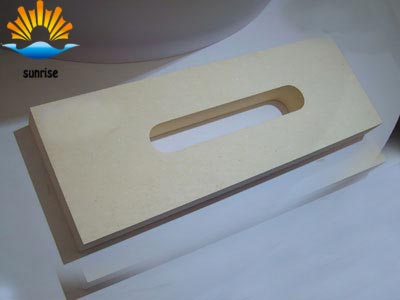Product
Fused Cast AZS Block
AZS Casting Type
AZS Ramming Materials
Fused Cast AZS TY-AZS41
Fused Cast AZS TY-AZS36
Fused Cast AZS TY-AZS33
Fused Cast Alumina Block
Fused cast Alumina Block TY-H
Fused cast Alumina Block TY-A
Fused cast Alumina Block TY-M
Fused Cast High Zirconia Block
Fused Cast Skid Rail Block
Silica brick
Magnesia Series Brick
Bonded Refractory Block
High alumina And Fire clay bricks
Insulation Series Brick
Ceramic Fiber Products
Contact Details
- 0086 371 63838939
- 0086 371 63835539
- sales@sunriserefr.com
- tkfanyi
- No.36 Fengchan Road, Zhengzhou City
Solutions
Refractory brick classification, what is breathable corundum brick?
- More related products
- Fused Cast AZS Block
- Fused Cast Alumina Block
- Fused Cast High Zirconia Block
- Fused Cast Skid Rail Block
Used to blow the metal porous breathable corundum brick, with corundum magnesia has some advantages. Industrial applications of breathable corundum brick can be used 63, fused corundum 80% made of pellets, industrial alumina (65%) and refractory clay (35%) of the mixture as a binder, 20%, the binder in the cylinder mill In the common fine grinding, greater than 60μm content can not exceed 1% to 1.5%. The mud is kneaded on a wet mill and requires a kneading of 10 min, a moisture content of 4.3% to 5% of the clay, and then sieves on a sieve having a mesh size of 5 mm. Brick in the pressure of 35MPa hydraulic machine molding, brick density of 2.60g / cm3. Products in the tunnel kiln or inverted kiln firing, firing temperature 1570 ℃, insulation 22 ± 2h, the total firing time can not be less than 150h.
There are a variety of methods for the manufacture of breathable corundum bricks, 20% of the binder is corundum waste (60%) and clay (40%) co-grinding system, the mud material moisture is 4% to 5%, pressed brick density 2.60 g / cm3 :, in the tunnel kiln after 86h firing, the maximum firing temperature of 1560 ℃, insulation (5 ± 1) h.
And some use of corundum as aggregate, pure calcium aluminate cement and SiO2 ultrafine powder as a binder, phosphate as a dispersant, the use of ultra-low cement castable process.


Read more
Need more information? Drop us a line
For more information on any of our products please get in touch using the form below. One of our sales team will respond to your enquiry as soon as possible.
Copyright © 2014 Zhengzhou Sunrise Refractory Co., Ltd. Site Index Product IndexSitemap









